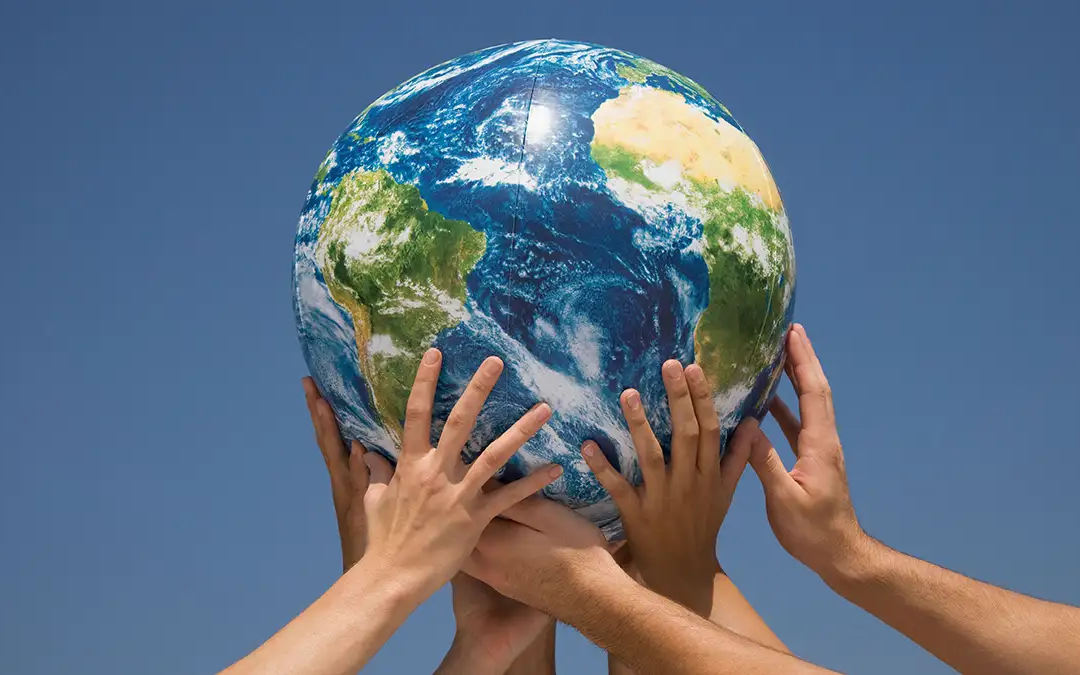By Suze Wyhldher
It seems we think of energy efficiency is a singular pursuit: one that involves ourselves, community, our family, our workplace. That there is a grassroots basis from the groundswell of taking responsibility for the human ruin we have made of our planet. A planet that now deals with 100 times the impact of us as a species over the last 20 years for a global population 8 billion. In that same time period, the International Union for the Conservation of Nature (IUCN) has declared 41,000 plants and animals as endangered.
That’s 28% of just the species already assessed. We have driven 75 mammal, 335 bird, 41 reptile and 65 amphibian species in tropical and subtropical regions to the brink of extinction in just two decades.
That’s not counting the flora and fauna completely and forever wiped out, as a direct result of overwhelming human impact over the last 100 years.
Whatever the accepted demarcation of climate change, and how much of it is a planetary pattern, humankind is not kind, and not blameless.
Not by a long shot. It’s the perfect climate storm when the high-pressure front of consumerism and the warm breeze of nature meet head-on. There have been five previous major extinction events as the result of catastrophic occurrences – like volcanic eruptions, asteroid impact, extreme temperature variations and changing sea levels. Each time, an estimated 70-90% of life on Earth failed to exist.
The sixth mass extinction is happening right now and it’s a crisis predominantly created by humans. Global destruction and fragmentation of habitat, crop and marine overharvesting, over fertilising, the illegal flora and fauna trade, the impact of introduced, and genetically modified species; water, air and soil pollution, climate disruption and an increase of pathogens.
Human activity has always resulted in environmental reformations, but over the last century they have been substantially large-scale. Ecologists and evolutionary biologists are increasingly aware that like any organism, pathogens and parasites evolve with anthropogenic change. There are complex links between the environment, human expansion and parasite development. Across the empirical and theoretical, humans directly and indirectly influence the specificity, virulence and polymorphism in parasites. These influencing factors are as diverse as biodiversity loss, habitat desolation, multi-dimensional pollutants, vaccines and antibiotics, climate change, species’ introduction, and an ageing and medicated worldwide population.
Understanding how parasites evolve in response to anthropogenic interference is the cornerstone of conservation biology.
As of 2022, of the some 41,000 plant and animal species assessed by the IUCN, more than 16,000 have been declared endangered. Experts agree that animals are going extinct at historical rates due mostly to human interference and an unbalanced increase in world population. 74% live in middle-income countries, 17% in the First World and 10% inhabit impencunious nations. This increase in food demand and production obviously requires a broadening of deforestation, a rise in development, proliferating pollution, and an overburdening of ecosystems – with few resounding solutions on a hastening timeline.
Current estimates say species are reaching extinction up to 1,000 times the rate prior to human existence.
Which of course makes sense. It was the transition of Homo sapiens from a nomadic to agricultural life that slapped the mark of mankind across the face of the Earth. It was only 12,000 years ago that we were hunter-gatherers in a world where possessions were limited by what we could carry, and mobility was a survival strategy. Certainly the hunter-gatherer way of life necessitated access to large areas of land in order to find enough in volume and variety of foods – up to 800 square kilometres. Nomads ranged from extended family, to larger groups. Never numbering more than approximately a hundred people, stayed for a few days, weeks and up to six months, reading and sweeping the territory they were in for water supplies, edible plants and game animals. Undoubtedly apex predators, the arrogant destructiveness of modern humankind and its inexorable reach is the cultivation of the the weaponry, hunting tactics and prowess of Paleolithic and Neolithic man.
Like the perpetual miasma that is Charles Shultz’s Pig-Pen, is how mankind has moved through the world for the last 200 years, with the catastrophe of trophic cascades particularly intense over the last fifty. These complex effects disrupt all levels of the ecosystem. When Arctic foxes were introduced to sub-Arctic islands, their abundant seabird diet turned grassland to tundra. Shipping and its ocean pollution’s reduction in sperm whale populations leaves the large squid happily proliferating.
Release the Kraken …
Although we’ve only actually explored 5% of the oceans we’ve managed to pollute 88% of it, with 80% of that being plastic. By 2050 plastic will likely outweigh all the fish in the sea.
Surely by now, the more enlightened definition of humans is the unique super-alpha predator because of our ruthless ‘hunting’ practices. Typically, we take out adult fish populations at 14 times the rate of self-predation.
Year after year 3 trillion fish are hauled from the ocean. Obviously this is far too many and doesn’t count the trillions in bycatch – a word that makes makes the needless slaughter of marine life sound such a casual thing. Should you wonder why fish populations have collapsed worldwide, 300 million annual filet-o-fish purchases worldwide is the tip of the fast-melting iceberg.
And it’s not the only thing we’re doing to fishies in the deep blue sea for the joy to you and me.
By such vast number killings, we exert enormous evolutionary selection pressure. Preferentially catching the fish we like – big ones – we inevitably engineer a critically adverse situation for those fish. Diminished species are less likely to survive, severing breeding lines and effectively creating evolutionary coding for fish to be small.
Aside from the inhumane overfishing of 90% of world fish stocks, 50 million tonnes of that a year is dumped right back into the ocean, and about 35% of catches never making it to the plate. Universal policies that dictate only larger-rather-than-smaller fish can legally be caught, is counterproductive to anything reasonably sustainable or logical.
Fundamentally, apex predators don’t take down adult prey. Juveniles are most vulnerable to attack, and mature animals are left to breed again.
What makes us super predators is our ability to tackle adult prey at minimal cost – all for maximum, short-term gain. Advances in killing technology excuses humans from the formerly dangerous act of predation by the way we now ‘capture’ caged and coralled mammals with bullets and stun guns, and fish with kilometres-long nets. It’s ‘minimal risk carnivoring’ compared to apex carnivores that are often injured and hungry, living what amounts to a dangerous existence.
We took the danger out, and put it into both illicit and legal drugs, long-term poverty, traumatic lifestyles and considering thy neighbour as thine enemy; such is the scrape and scramble for monetary gain in the pursuit of unhappiness.
As predators finding we no longer have any, amid our general disregard for the rest of the planet we turn against ourselves.
Geological eras are periods comprising all the rocks formed during that time, allowing us to study the different stages through which the planet has passed in its 4.5-billion-year existence.
Such is our current negative stamp on the environment it is described by some scientists as a new geological age: the Anthropocene. Add that to the Cenozoic, Mesozoic and Palaeozoic.
Pre-industrially – and again, most specifically since the second half of the last century – changes in climate activity and the trumped up requirements of humans and consequent behaviour have increased the rate of utter environmental degradation to a velocity never seen during any other period in history.
Including much, much longer ones.
Largely, the stance we adopt is not shamefaced but rather shameless and blameless, while making a lot of noise about what’s possible as we continue on our merry malfeasant way. For an inordinate amount of time.
As usual.
We haven’t even cracked equal pay in more than fifty years, and Indigenous voices remain silenced across the planet. For all our technology, AI and scientific superiority, we remain tediously barbaric and addicted to everything unworthy.
At the moment, we’re upset about imperilled ketchup and mustard supplies because of pandemic shortages, harsh weather in western Canada and floods in Western Europe. Ice cream supply is down 1.7% and we had to publish that. Three billion mammals, reptiles, birds and frogs were killed or displaced in just the Australian 2020 fires, and nobody much talks about that.
What we do talk about quite a lot is the future. Depending on where you live and how you spend your intellectual time depends on the info and the outlook you’ll get: surrealistically bleak; or a muskily seductive hallway tour of the cybernetic collective. Focussing on the future does indeed take the mind from this torpid present, and who has time to go wading into the past when nothing is archived anymore anyway.
It’s difficult to know what we learn from the past when we spend so time denying, hiding, or running away from it – the thing you can never do, apparently.
We don’t even much learn from the present.
If we did, there’d be more than just four countries in the world ranked as the most energy efficient – every country would be. For the sake of the planet. To that end, richer countries would help poorer ones; not to own them, but to own the planetary damage done in unconditional reparation.
I know. That’s blown-circuit kind of thinking.
Whether the idea and the implementation of 21st century energy efficiency is a tail-eating dragon. or an elephantine unburdening of our Earth one bite at a time, France, the UK, the Netherlands and Germany are the best at it.
It’s hard to know exactly how that’s accorded; France gets around 20% of its power needs from renewable sources – 8% from wind, and needing more to meet its climate goals. 74.5% is nuclear, 16.3% hydro-electric, 9.1% thermal, with wind power and other renewable sources at 0.1%. The war in Ukraine and disruptions in its conventional electricity generation fleet have France’s energy system under stress.
As a success strategy it’s open to debate, but them there’s the facts.
Germany is transitioning from atomic and fossil fuel energy to renewables. It’s a change that doesn’t come cheaply – funded by levies and taxes. Energy efficiency is an uncomfortable fence on which to sit however you straddle it.
Nowhere even in the Top 10, the Petrostate of Venezuela uses almost 30% renewables.
Or so it says amid all the chaos.
The Earth Science Division of NASA includes data on sunlight, temperature, wind and precipitation for a long-term, global view of the key elements of how our planet works. It’s information that’s put to use by pinpointing renewable energy sites, and improving the energy efficiency of buildings. Its Prediction of the Worldwide Energy Resources (POWER) project avails NASA data to sustainability specialists and decision makers all over the world, whether for schools, private companies, developers, or the building or altering of someone’s home.
It’s pretty much already too late to save our over-populated planet – but maybe if we actually find consensus one day, even if in 200 years, we might give ourselves, and our children’s children’s children, an extra millennium to debate this matter a little more fervently.














